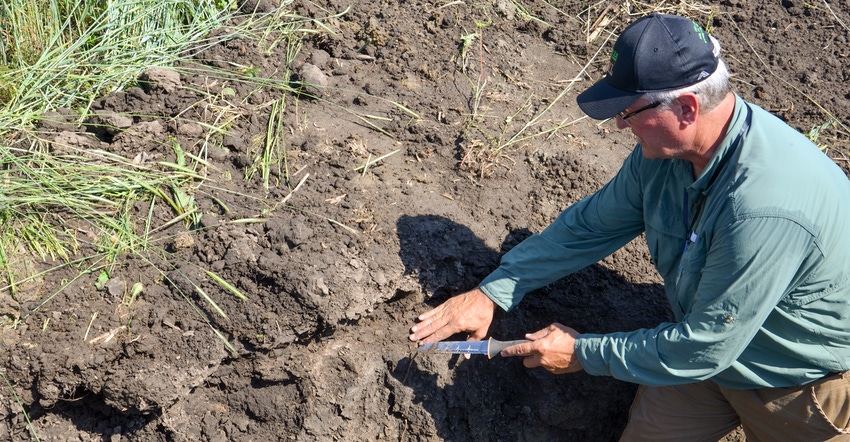January 21, 2019

Sometimes the coolest things are at your fingertips and you don’t even realize it. Soil health and expertise on no-tilling and cover crops qualify. Indiana is recognized outside of our state borders as a leader in these categories. Yet less than 1 in 10 crop acres in Indiana grows cover crops, and roughly 1 in 4 corn acres is no-tilled. Not everyone realizes what a treasure exists here.
Think of it this way. I lived most of my life within 25 miles of the Indianapolis Motor Speedway. People flock here from all over the world for the Indianapolis 500 race. Yet I did not attend my first race until I was in my mid-50s, and I only went because my son persuaded me to take him. I had been taking my proximity for granted. Now it’s a regular family outing. Our oldest daughter from Georgia even joins us.
Barry Fisher has helped many farmers adopt conservation tillage, no-till, cover crops and soil health practices. Serving in various capacities with the Natural Resources Conservation Service, he’s a “hands-on” guy who has put out plots, jumped in soil pits and answered the phone every time a beginning no-tiller called.
National leader
People within NRCS decided Fisher could do all that on a larger scale. Today, he’s a regional soil health manager in the NRCS Soil Health Initiative, covering eight Corn Belt states going as far as North Dakota and Kansas.
Fisher knows the advantages Indiana farmers have. “Indiana has a great partnership amongst conservation agencies, where technicians and experts work side by side to help farmers,” he says. “That doesn’t exist everywhere. There are also many veteran no-tillers and cover croppers here. By and large, they’re willing to share what works and doesn’t work with farmers just starting out. You don’t have that everywhere, either.”
In fact, Fisher says other states often regard Indiana as the model they want to duplicate to promote no-till, cover crops and soil health. Are they succeeding?
“Cover crops and soil health are catching on in several places within the Corn Belt,” Fisher reports. “Meeting rooms are often packed with people wanting information. Iowa is on fire for these concepts, partly because they must address water quality issues.
“We’re also seeing lots of interest in Missouri, particularly the Bootheel. There are farmers making these systems work. Once that happens, others begin asking questions.”
One obvious difference is the questions he’s asked where no-till and cover crops are in their infancy.
“They’re having discussions that took place here 10 to 15 years ago,” Fisher says. “For example, no-tillers here figured out long ago that starter fertilizer with plenty of nitrogen is a must, especially with cover crops. That’s a revelation in other places, especially in parts of Iowa where starter fertilizer isn’t as common.”
If you farm in Indiana, you already have people who can advise you on starter fertilizer, how to set up your planter and much more. If you haven’t yet given no-till or cover crops a fair test on your farm, why not do it now? You might find that it fits your needs, like I found that I’m intrigued by attending the Indy 500. Don’t wait 50 years to figure it out!
Comments? Email [email protected].
You May Also Like




